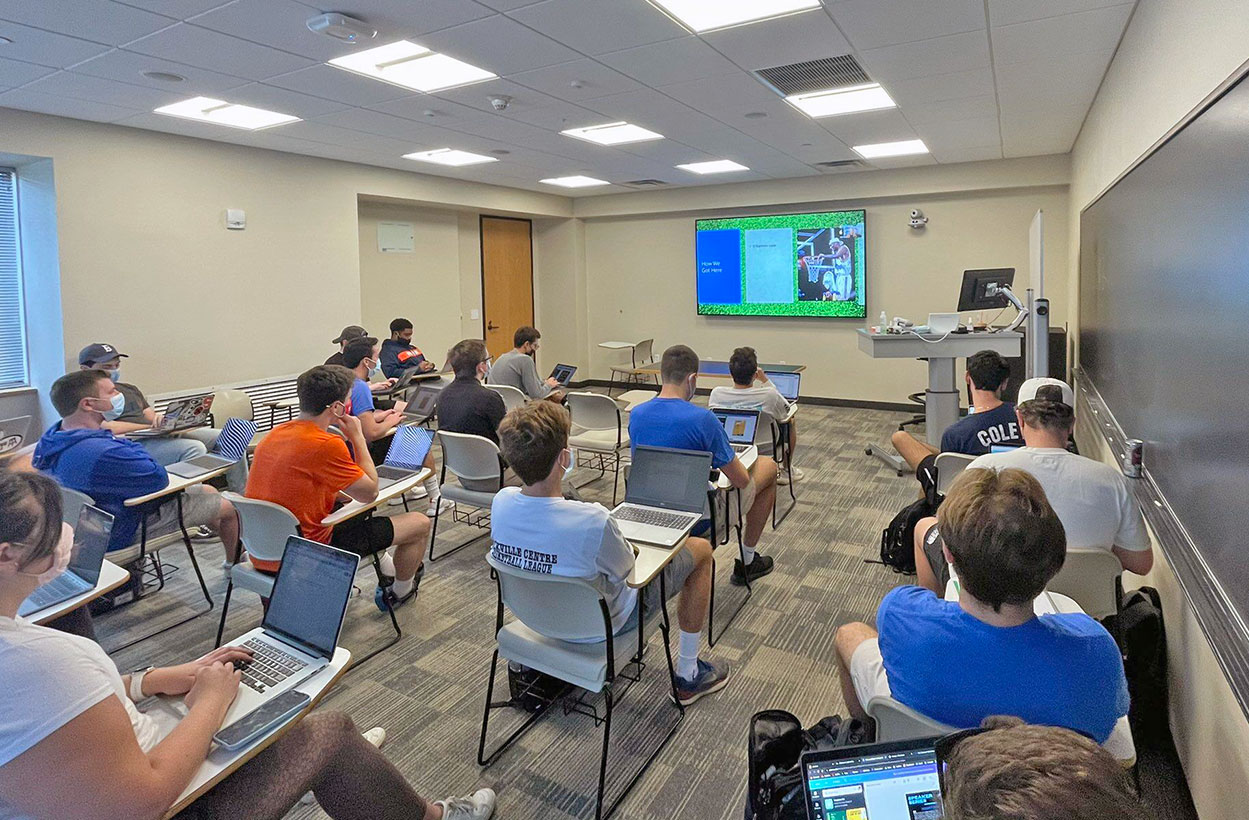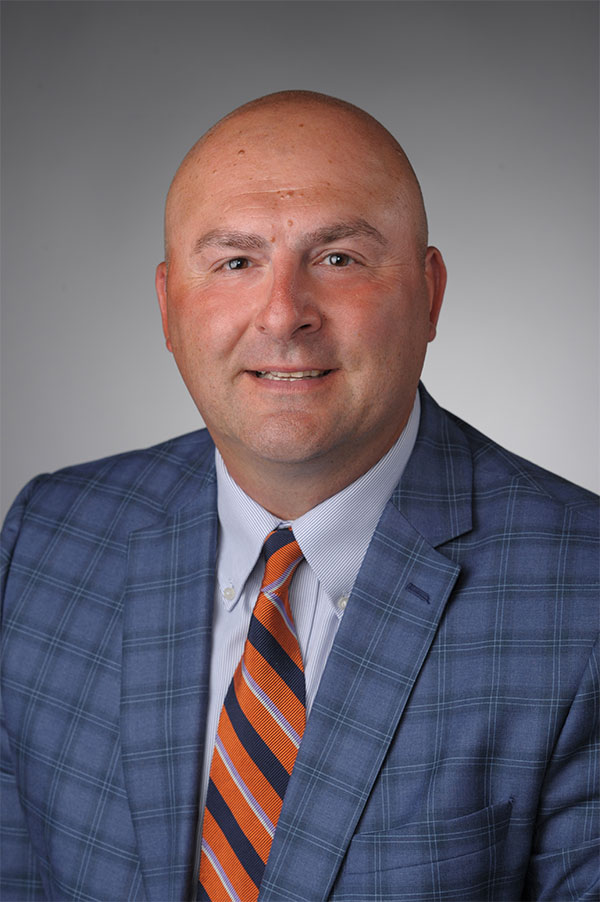In a recent article from Sports Illustrated, Ross Dellenger had written this quote about the new Name, Image and Likeness rule that has turned college athletics on its ear. The NCAA had determined, starting July 1, 2021, all athletes could benefit financially from their name, image and likeness.
Actually, there’s a group of 28 students in Falk College who, by the end of this semester, will fully understand NIL. This fall, those students are taking a “Name Image and Likeness” course from the department of Sport Management that is believed to be the first undergraduate course of its kind in the country.

The course is being taught by David Meluni, an assistant teaching professor in sport management who has more than 20 years of experience in collegiate athletics, first as a baseball player at Ithaca College and then by working in ticketing, marketing, sponsorship and digital roles at Ithaca, Cornell, Florida State and Syracuse.
Falk’s course includes the model of NIL. Students are collaborating with professionals in the industry while learning how to build a brand and ultimately monetize opportunities. The students are involved in proposal writing, infographic design and the development of marketing and social media plans.
“Our department prides itself on creating courses that connect our students to contemporary issues in the sport industry,” says Michael Veley, Rhonda S. Falk Endowed Professor and department of Sport Management director and chair. “The NIL legislation will change the business model of Division I college athletics going forward. When you match the teaching skills of Professor Meluni with the expertise and collaborative partnership of (the sponsorship sales company) SponsorUnited, this course will be a game-changer.”

In this Q&A, we ask Meluni how the class came together, the impact of NIL and what his students are learning.
Q: The NCAA announced its decision on July 1 and less than two months later you’re teaching a “Name, Image and Likeness” course. Tell us how that came together so quickly.
A: I’m always looking at trends in the sport industry, and as a former student-athlete I have been keeping an eye on NIL for a few years. Once the NCAA tabled a decision in January 2021, we knew something had to happen this past July so I started planning at that point.
Q: As Michael Veley says, NIL–and this course–are game-changers. Can you explain why this is such a groundbreaking rule change?
A: Think multi-media rights holders, licensing and merchandising, just to start. If a brand can associate with an athlete, how does that impact the corporate partner of an athletic department? Brands want engagement, and the athlete can drive that.
Q: You have a varied and extensive background in collegiate athletics. How did that help you develop the curriculum for the course?
A: Spending 10 years selling corporate sponsorships in collegiate athletics at Syracuse, followed by six years in digital media at SIDEARM Sports, I navigated the many challenges that brands experience. An athlete can provide an avenue that brands traditionally struggle with. Brands want engagement, and no one is better to provide that than athletes who essentially have become influencers.
Q: What are your students learning and what are some of the skills they’re acquiring through this course?
A: Students are learning how to prospect for a potential partner by using industry leading sales software provided by SponsorUnited. They are evaluating the social media Instagram accounts of collegiate athletes to predict pricing and trends and using Canva to create graphics for themselves as if they were a student-athlete or consulting for a student-athlete.
Q: Your class is working closely with SponsorUnited, a sponsorship sales company. Explain how that partnership started and what SponsorUnited is providing to your students.
A: We are the only university in the country right now with this kind of relationship. We have been working with SponsorUnited in different capacities for two years and its software is the industry leading prospecting tool for organizations to vet brands. The software updates daily and allows you to track sponsorship prospects and industry trends. SponsorUnited is amazing to work with and we are proud to use their software as a supplement to the textbook.
Q: Your textbook is Malcolm Lemmon’s “Impact Beyond the Game: How Athletes Can Build Influence, Monetize Their Brand, and Create a Legacy.” The title is certainly fitting, but what’s inside the book that makes it so useful for this course?
A: Everything! When I decided to create the course, I wanted to use this book because it’s an amazingly easy read, it touches upon everything from how to deal with media to social media importance, and there is nothing in it that’s not covered within the scope of NIL. Malcolm hit a home run with this book before NIL was even here.
Q: What has been the reaction so far from students in your class and–we have to ask–are there any student-athletes who are taking the class this fall?
A: The class discussions are outstanding. Students in our department are connected to hot topics in the sports industry and this is certainly the hottest one right now. This semester, we have several student-athletes in the class, along with a handful of team managers who are majoring in sport management, sport analytics and broadcasting. It is the perfect mix of students, and next semester will likely be the same.
Meluni says there are discussions to expand opportunities for students and industry professionals who want to learn more about NIL through an online NIL course from the Orange Academy.
An SU News story by Matt Michael originally published on Wednesday, September 29, 2021.
